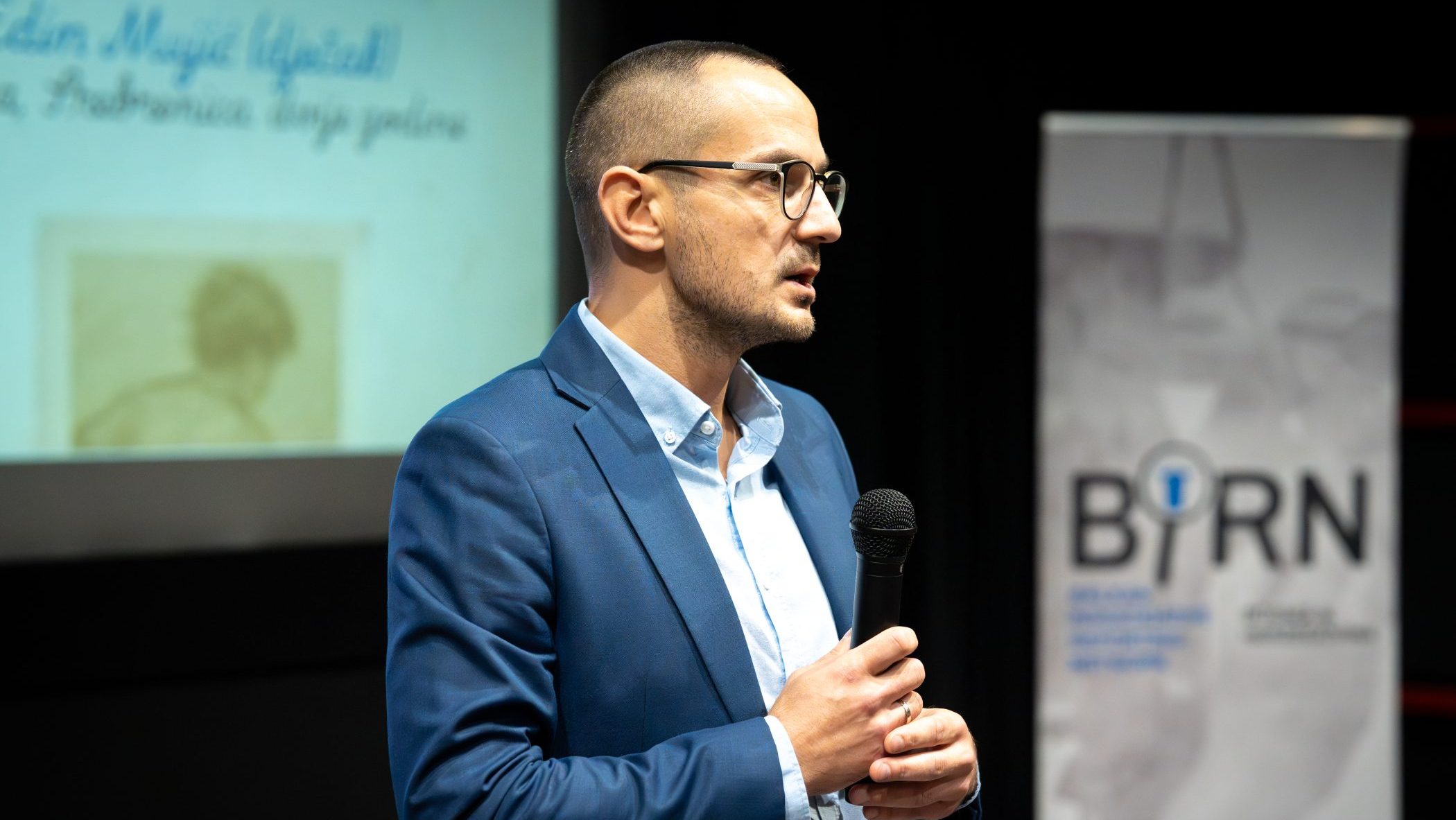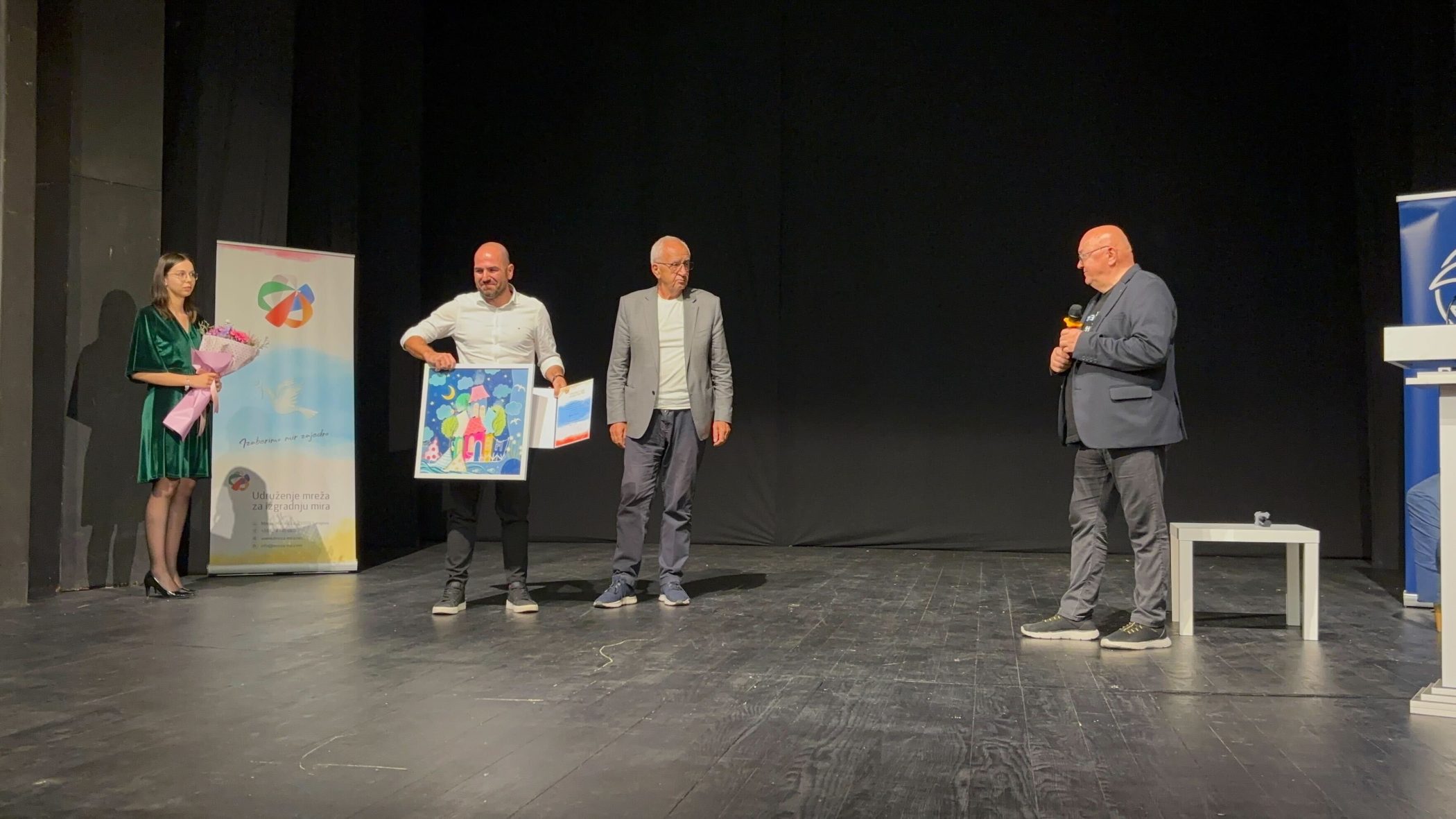This post is also available in: Bosnian
According to Manning, during the investigations conducted from 1996 to 2000 more than 400 blindfolds and bands for tying of hands were found in each of the graves discovered in the surroundings of Zvornik.
Besides that, investigators found religious objects, like beads and small Qur’ans, which indicated that the victims belonged to Islam, and not to any other religion.
The witness pointed out that evidence, which could link the victims with certain places of executions, were found in some of the graves. For instance, he mentioned that parts of the door of the warehouse building in Kravica village, which was eight kilometres away from that location, were found in Glogova I and II primary mass graves.
According to the charges against Karadzic, on July 13, 1995 Serb forces killed more than 1,000 Bosniak men from Srebrenica in that warehouse. Karadzic, the then President of Republika Srpska and supreme Commander of its armed forces, is charged with genocide against more than 7,000 Bosniaks from Srebrenica following the occupation of the enclave by the Republika Srpska Army, VRS on July 11, 1995.
In addition, the indictee is charged with the persecution of Bosniaks and Croats throughout Bosnia and Herzegovina, terror against civilians in Sarajevo by long-lasting artillery and sniping attacks and taking members of UNPROFOR hostage.
Manning explained that the door and wall fragments from the Kravica warehouse were brought to the graves along with the bodies, which were collected and loaded by big construction machines at the location of the crime. Manning further said that the same fragments were then also found in secondary mass graves in Zeleni Jadar, to which VRS transferred the bodies, which had originally been buried in Glogova, in the fall of 1995, as part of a secret operation aimed at hiding the evidence of the crime.
The witness illustrated the operation with satellite images, obtained from US authorities. Those images depict ongoing work on exhuming bodies from primary mass graves and burying them in secondary graves at the end of September and beginning of October 1995.
During the cross-examination Karadzic presented his thesis that the area, where the graves were located, was a battlefield over the course of nearly 45 months and that they buried killed enemy soldiers in mass graves as part of the terrain cleaning operations.
We did not find any pieces of evidence that the mass graves contained bodies of people, who were killed during the earlier activities of the war, but execution victims, many of whom had blindfolds and tied hands, Manning said.
We shall come to that, Karadzic said, adding: You found shrapnel fragments in the graves. Have you ever seen an execution being conducted by using shrapnel pieces? Manning responded by saying that shrapnel pieces were found in the bodies of victims from the Kravica warehouse and the Cultural Centre in Pilica village, adding that they observed burns caused by explosions on those bodies as well. According to the charges, Serb soldiers used hand bombs, among other things, at those crime locations.
On the basis of the fact that a traffic license with a Serb name on it was found in one of the graves, the indictee suggested that a Serb person was among the victims, asking the witness how that person got there.
However, Manning responded by saying that the fact that the document was found in the grave did not mean that the document holder was among the victims.
Karadzic said that the fact that cheque and bank books and passports, as well as parts of Dutch newspapers, were found next to the victims supported his thesis that the graves did not contain victims from Srebrenica.
Was it possible to make bank transfers from Srebrenica during the three and a half years of war…Passports were found too. Prisoners of war could not have had passports, the indictee said.
Manning repeated his previous statement that the found evidence indicated that the victims were captured and shot while having those documents with them. Also, he said that victims used parts of Dutch newspapers, which they had obtained from the UNPROFOR Dutch Battalion’s Base in Potocari, as cigarette paper.
Repeating what he had said during the examination of other witnesses, Karadzic suggested that the strips of material that were found in mass graves were actually the headbands of Islamic fighters. However, the witness denied his allegation, saying again that blindfolds and bands for tying of hands were found in the graves and on some of the bodies.
The indictee is due to continue cross-examining investigator Manning on March 7.R.M.

